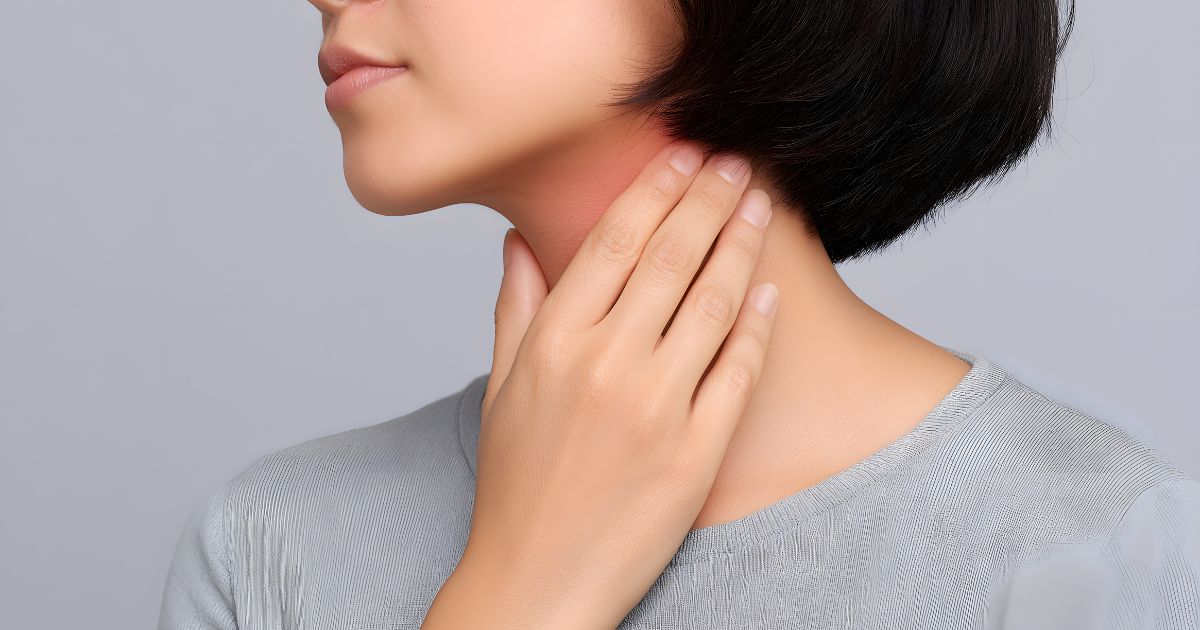True Cellular Formulas Team - Feb 17, 2023
Are There Toxins in Your Salt?

Although the myth that all salt is unhealthy has been thoroughly debunked, the reality of our modern world's toxicity and mining methods means that even unrefined sea salt and pink Himalayan salt are at risk of contamination. This article explores the ins and outs of salt toxicity and what you can do about it.
What is Salt?
Salt is a mineral predominantly composed of sodium chloride (NaCl). This natural mineral is found in salt mines or bodies of water and then processed for human consumption through mining or evaporation.
Salt has been used and consumed by humans dating back to 6,000 BC. Salt was so valuable at one time in our history that it was considered a currency, mostly because it was used as a preserving agent in times before electricity. As a means to preserve food, this meant life or death! Today, we still use salt to preserve, and it remains a major global food industry for food preservation and seasoning.1
Salt and Human Health
As an essential mineral, salt is imperative for human life.1 Although it has been wrongly demonized over the years, salt is, in fact, nutrient-dense food and contains many trace minerals, including bromine, boron, phosphorus, zinc, silicon, iron, manganese, and copper.2
Our bodies require salt to function partially because our cells communicate with one another via an electrical charge. Saltwater inside the body enables this electrical charge and makes life possible.3
Toxic Salt?
Salt has been wrongly associated with various disease models in the same way that meat has. Epidemiological studies link these foods with health concerns because they don’t isolate salt or meat from the rest of the meal’s ingredients that they’re consuming, nor do they consider the quality of the foods consumed.4
For example, someone eating a homemade grass-finished steak, oven-roasted organic sweet potato, with butter and lots of sea salt is lumped into the same “salt and meat consuming” category as someone eating a McDonald’s burger, french fries deep fried in vegetable oil, a coke, and lots of iodized (refined) salt.
Furthermore, the problem with these associations is that they don’t consider other lifestyle factors like sleep quality or exercise habits. Ultimately, these conclusions blindly demonizing red meat and salt are correlative, not causative.5
We can see that refined salt is not the same as unrefined salt. Refined salt (also known as table salt) has been highly processed, removing many essential minerals that make salt so nutritious. Other additives to prevent the salt from lumping together in humidity can turn a nutrient-dense superfood into junk food.6
But is unrefined salt problem-free? Unfortunately not.
The problems with “unrefined” salt are twofold: 1) the pollution found in the nature that the salt is found in and 2) how we extract it.
Microplastics in Sea Salt
The problem with sea salt comes from the plastic pollution found in saltwater bodies across the globe. One study of international samples found microplastics in all but one of the samples.7 A meta-analysis of microplastic pollution in commercial salt highlights the fact that marine pollution will undoubtedly lead to the contamination of sea products, including salt. This problem permeates the entire food industry since salt adsorbs contaminants and transfers them to other salt products.8
Microplastics may sound unthreatening due to their small nature, but the toxins (like BPA’s) found in plastic wreak havoc on human health.8 Notably, plastics harm hormonal health, weight gain, and all the disease models affected by toxicity.9 On top of the impact of plastics, these microplastics often contain compounds such as plasticizers, stabilizers, and pigments, many of which are hazardous to human health.9
Heavy Metals in Pink Himalayan Salt
The problem with pink Himalayan salt comes from the mining process of these rock salt formations. One study highlights the analysis of 31 different brands of pink salt and found contamination from metals including lead, mercury, cadmium, and aluminum.10
One brand exceeded the safe level set by Food Standards Australia and New Zealand by 25% and contained more than 130 times more lead than conventional white table salt.10 Other pink salts contain heavy metals, including mercury, cadmium, and aluminum, which can be harmful if consumed long terms.10
The Solution to Contaminated Salt
As an essential mineral, there is no avoiding the fact we need to consume it to survive. And who are we kidding? Food without salt sounds lame.
The solution to the toxic salt dilemma is twofold. For starters, plastics don’t bioaccumulate in the body, so the best thing you can do is to mitigate all unnecessary exposure (think plastic Tupperware, plastic ice cube trays, and plastic wrapping on food). Secondly, you can get sweaty! Sweating is one way to detox from these BP’s naturally, so making the time to exercise, sauna, or do any activity that gets you sweating can help eliminate the small build-up from daily exposure through things like salt.11
When it comes to the kind of toxins that bioaccumulate, like heavy metals, reach for a zeolite clinoptilolite supplement. CytoDetox® is a potent liposomal zeolite clinoptilolite with fulvates that supports the removal of environmental toxins like heavy metals, chemicals, pesticides, and biotoxins at the cellular level, safely and 100% naturally.12
The Nice List
- Selina Naturally Celtic Sea Salt (Makai Pure or Fine Ground Celtic)
- Ava Jane’s Kitchen Colima Sea Salt
- Fusion Matcha Salt
- Bali Pyramid Balinese Salt
- Bolivian Rose Andes Mountains Mineral Salt (from SaltWorks)
- SALTVERK Icelandic Salt
- Nordur Salt
- Vancouver Island Sea Salt
- Jacobsen Salt Co Oregon Sea Salt
- Fusion Matcha Salt
Summary
Salt is vital for human health and has been wrongly linked with diseases through poor science. Therefore, understanding the benefits of salt and distinguishing between unrefined and refined salt is important.
Still, things have changed over time with the advent of pollution, causing even high-quality salt to become potentially toxic. Although unrefined salt is healthy, modern pollution and mining methods have caused sea salt and pink salt to become contaminated.
- Círillo, Massimo, et al. “A History of Salt.” American Journal of Nephrology, vol. 14, no. 4-6, 1994, pp. 426–431., doi:10.1159/000168759.
- Advisory Report to the Secretary of Health and Human Services and the Secretary of Agriculture. “Scientific Report of the 2015 Dietary Guidelines Advisory Committee.” U.S. Department of Agriculture (USDA), 2015, health.gov/sites/default/files/2019-09/Scientific-Report-of-the-2015-Dietary-Guidelines-Advisory-Committee.pdf.
- X, Science. “Vital for Life, Heat and Power – What You Never Knew about Salt Water.” Phys.org, Phys.org, 14 Sept. 2018, phys.org/news/2018-09-vital-life-power-knew-salt.html.
- Vandenbroucke, Jan P et al. “Causality and causal inference in epidemiology: the need for a pluralistic approach.” International journal of epidemiology vol. 45,6 (2016): 1776-1786. doi:10.1093/ije/dyv341
- Alexander, Dominik D et al. “Red Meat and Colorectal Cancer: A Quantitative Update on the State of the Epidemiologic Science.” Journal of the American College of Nutrition vol. 34,6 (2015): 521-43. doi:10.1080/07315724.2014.992553
- Food Insight. “The Science of Anti-Caking Agents.” Food Insight, 10 Oct. 2018, foodinsight.org/the-science-of-anti-caking-agents/.
- Karami, Ali et al. “The presence of microplastics in commercial salts from different countries.” Scientific reports vol. 7 46173. 6 Apr. 2017, doi:10.1038/srep46173
- Author links open overlay panelDiogo Peixoto a, et al. “Microplastic Pollution in Commercial Salt for Human Consumption: A Review.” Estuarine, Coastal and Shelf Science, Academic Press, 10 Feb. 2019, www.sciencedirect.com/science/article/pii/S0272771418300647.
- Lim, XiaoZhi. “Microplastics Are Everywhere - but Are They Harmful?” Nature News, Nature Publishing Group, 4 May 2021, www.nature.com/articles/d41586-021-01143-3.
- Fayet-Moore, Flavia et al. “An Analysis of the Mineral Composition of Pink Salt Available in Australia.” Foods (Basel, Switzerland) vol. 9,10 1490. 19 Oct. 2020, doi:10.3390/foods9101490
- Genuis, Stephen J et al. “Human excretion of bisphenol A: blood, urine, and sweat (BUS) study.” Journal of environmental and public health vol. 2012 (2012): 185731. doi:10.1155/2012/185731
- Mastinu, Andrea et al. “Zeolite Clinoptilolite: Therapeutic Virtues of an Ancient Mineral.” Molecules (Basel, Switzerland) vol. 24,8 1517. 17 Apr. 2019, doi:10.3390/molecules24081517



